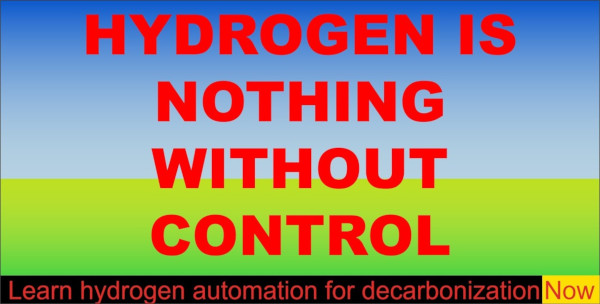 With the global push to reduce the volume of carbon emitted into the atmosphere, what role can automation play? Emerson’s Jonas Berge tackles this question in a LinkedIn essay, Automation: Enabler for Decarbonization.
With the global push to reduce the volume of carbon emitted into the atmosphere, what role can automation play? Emerson’s Jonas Berge tackles this question in a LinkedIn essay, Automation: Enabler for Decarbonization.
Jonas opens his essay:
Most people have no idea of how much infrastructure there is around the world to put fuel in their tank or energize a lamp at the flick of a switch. Most of it from fossil fuels. Now we need to build vast new infrastructure for #hydrogen, ammonia, and carbon capture to meet our #sustainability goals like net-zero carbon. Lots of new plants must be built for #decarbonization of energy and just about all plants have to be retrofitted.
He notes:
Automation is a key enabler for production, transportation, and storage of hydrogen, as well as power generation and heating at scale. But we have to do it right because hydrogen is a challenging element. Automation engineers play a big part in accelerating the transition.
Jonas explains that the transition away from fossil fuels to other non-carbon energy carriers such as hydrogen and ammonia:
…means lots of new plants need to be built. There is also decarbonization of production within chemical plants which means new process units need to be added to existing plants.
Example process unit additions include:
- Electrolyzer
- Steam Methane Reformer (SMR)
- Carbon capture
- Transportation and storage
- Pipeline injection
- Vehicle refueling stations
- Fuel cells
He notes the technical challenges associated with hydrogen:
- Hydrogen is the smallest atom, so small it can permeate the lattice of metal
- Hydrogen causes embrittlement of metal leading to cracks
- Liquefaction to liquid hydrogen (LH2) requires temperature near absolute zero (~20 K)
- Transported and stored as compressed hydrogen (CH2) at ultra-high pressure
- Hydrogen is highly flammable
- Hydrogen burns with an invisible flame
Hydrogen has been used in industrial processes for decades.
Hydrogen is widely used in refining and chemical industries like fertilizers and explosives, as well as rocket fuel since many decades. Some unit processes like fuel cells at MW scale are relatively new though.
Read Jonas’ essay for more on the role of automation and solutions for electrolyzers, steam methane reformers, carbon capture with vacuum swing adsorption (VSA), carbon capture with amine treatment, purification with pressure swing adsorption (PSA), pipeline injection, vehicle refueling stations, fuel cells, and overall sustainability initiatives.
Also, check out Jonas’ wide collection of LinkedIn essays on topics such as digital transformation, safety, analytics, autonomous operations and more.

